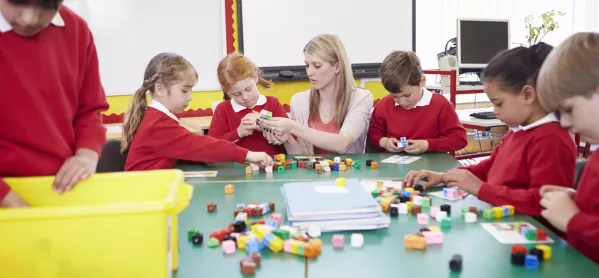- Home
- Decision to scrap ‘important’ early years goal defended
Decision to scrap ‘important’ early years goal defended

Department for Education advisers who were consulted on the new early learning goals have defended the government’s decision to drop the “shape, space and measures” target, despite an admission that spatial awareness is an “important” aspect of children’s development.
The comments came from Kristopher Boulton and Clare Sealy, who were both part of a group that advised the DfE on the revised Early Learning Goals (ELGs).
They said this week that removing the target should not be a problem - so long as teachers deliver a well-rounded curriculum.
The news came as Mr Boulton fended off criticism from teachers and consultants for saying he “wouldn’t have time” to read research on the subject of spatial awareness in the early years.
Controversy: ‘I don’t have time for research’ - former DfE adviser
Background: Proposed new Early Learning Goals - full details
Viewpoint: Want to boost science and maths? Teach spatial skills
When the government published draft new ELGs in 2018, as part of the review of the early years foundation stage, it chose to omit the “shape, space and measures” target, as well as any mention of problem-solving and reasoning.
The former advisers’ comments formed part of a discussion on Twitter, sparked by maths consultant Bernie Westacott, who said: “Everything I am reading emphasises the importance of developing spatial abilities in young children. What evidence did [the DfE] come across that is leading to dropping shape and space from the ELG?”
When alerted to the debate by Helen Williams, an independent educational consultant specialising in primary and early years maths, Ms Sealy said: “This is only a problem if teachers narrowly ‘teach to the ELG’ rather than having a rich curriculum centered around the developmental needs of the child.”
Mr Boulton added: “There’s also the question of what teachers were doing when it was included. It’s one thing to argue that spatial awareness is important (agree,) it’s another to argue that removing [shape, space and measures] from [the ELGs] is impeding children’s development of spatial awareness (jury’s out).”
But a recent report from the Education Endowment Foundation found that “there were some concerns about the removal of the ELG for shapes, space and measure”.
“While no school suggested that they had, or would, stop teaching aspects of the previous ELGs, schools did acknowledge that they had given these areas less attention or covered them in less depth than they would have done previously,” it said.
Last year’s decision to remove the “shape, space and measures” goal was met with some criticism from the sector, including other DfE advisers.
Dr Williams and Dr Sue Gifford, a member of the expert panel invited to review the goals, said: “Key aspects of mathematics are missing, including problem-solving and the entire ‘shape, space and measures’ goal. This gives teachers negative messages about the nature of mathematics and the value of such experiences for young children.
”‘Shape, space and measures’ provide opportunities for children to solve problems and reason practically about mathematical relationships at their developmental level, by fitting shapes together and visualising rotations or exploring equivalence in comparing lengths, capacities and weights.
“The new goal ‘numerical patterns’, which replaces this, is a strange mish-mash, combining the indecipherable ‘comparing numbers’ while ignoring key aspects of pattern awareness, such as identifying pattern units and rules.
“The omission of the entirety of ‘shape, space and measures’, as well as any mention of problem-solving and reasoning in the goals, leaves it to chance whether any of this is taught.
“With the current high-stakes attached to achieving a ‘good level of development’, it is disingenuous to ignore the potential effects of unrealistic targets on the one hand and the omission of fundamental early experiences on the other.”
Ms Sealy told Tes the decision not to include the “shape, space and measures” goal was made by the DfE and was discussed by the advisory panel “along with everything else”.
“Under the confidentiality agreement I cannot share what was discussed [nor] give my personal opinion regarding the matter,” she said.
“However, goals are just goals, endpoints. They do not describe the whole of what should be taught and are certainly not meant to be a curriculum.
“If some EY practitioners are ‘teaching to the goals’ this is just as worrying as when teachers of yr6 or yr11 teachers teach to the test. I am sure we all agree that teaching children about shape, space and measure is a vital component of any EY maths curriculum.”
The draft ELGs were piloted in more than 20 sample schools in September, and are in the process of being evaluated before implementation in 2020.
The DfE and the Conservative Party have been approached for comment.
Keep reading for just £1 per month
You've reached your limit of free articles this month. Subscribe for £1 per month for three months and get:
- Unlimited access to all Tes magazine content
- Exclusive subscriber-only stories
- Award-winning email newsletters



